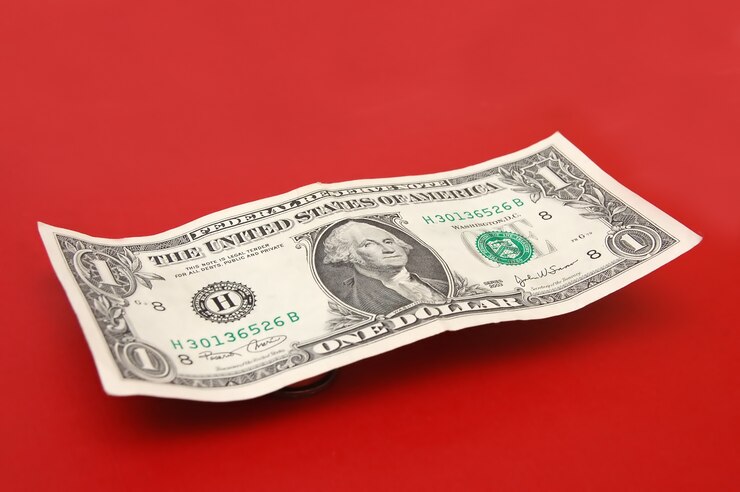Step back in time to the Great Depression era and hold a piece of history in your hands: a 1935 silver certificate dollar bill. But beyond its nostalgic charm, a question lingers – what is the 1935 silver certificate dollar bill value today? Unveiling this value requires understanding these unique certificates and the factors influencing their worth.
A Legacy of Silver
Issued between 1878 and 1964, silver certificates were essentially paper substitutes for silver coins. Each certificate guaranteed the bearer an equivalent amount of silver upon demand. However, in 1933, the government stopped redeeming them, leaving their 1935 silver certificate dollar bill value solely in the hands of collectors.
Rarity Reigns Supreme
The first key to determining 1935 silver certificate dollar bill value is rarity. The fewer notes printed in a specific series or with unique features, the higher their potential value. For instance, the 1935-E Hawaii star note, with only around 800 printed, commands significantly higher prices compared to standard notes.
Condition Counts
A crisp, uncirculated 1935 silver certificate boasts a much higher 1935 silver certificate dollar bill value than a well-worn one. Collectors prize notes with sharp corners, vibrant colors, and minimal folds or tears. Professional grading services like PCGS or NGC authenticate and assign condition grades, further influencing value.
Star Power
Look for the small star symbol next to the serial number on your 1935 silver certificate. This “star note” designation indicates replacement bills for damaged notes and generally hold more value than their non-star counterparts. However, not all star notes are equally valuable; specific series and combinations fetch higher prices.
Seeking Expert Help
Navigating the complexities of 1935 silver certificate dollar bill value can be daunting. Consulting reputable coin dealers or professional numismatists is crucial. They possess the expertise to accurately assess your note’s rarity, condition, and unique features, providing a reliable valuation.
Beyond Face Value
Remember, the 1935 silver certificate dollar bill value extends beyond its face amount. These historical artifacts hold significant collector value due to their limited availability, unique designs, and connection to a bygone era. Owning a well-preserved 1935 silver certificate represents not just a financial asset, but a tangible piece of American financial history.
Unveiling Your Treasure
If you possess a 1935 silver certificate dollar bill, don’t underestimate its potential worth. Research its series, condition, and any unique features. Consult experts for a professional evaluation and explore reputable auction houses or coin dealers for potential sale. Remember, the true 1935 silver certificate dollar bill value lies not just in its monetary worth, but in its historical significance and the story it tells about a fascinating era in American finance.
Additional Tips
- Familiarize yourself with online resources and coin collecting communities to gain knowledge and stay updated on market trends.
- Exercise caution when dealing with online sellers and prioritize reputable coin dealers or auction houses.
- Carefully store your 1935 silver certificate in protective sleeves to preserve its condition and maximize its potential value.
By understanding these factors and seeking expert guidance, you can unveil the true 1935 silver certificate dollar bill value and appreciate its significance as a valuable historical artifact.
A Dollar’s Worth of History: The Impact of the 1935 Silver Certificate
Unassuming and green, the 1935 silver certificate dollar bill might seem like a relic of the past. However, beneath its familiar George Washington portrait lies a story woven into the fabric of American economic history. Its impact transcended its monetary value, influencing public perception, fueling economic recovery, and ultimately paving the way for our modern currency system.
Born in a Time of Turmoil
The 1930s were a period of immense economic hardship. The Great Depression had crippled the nation, leaving millions unemployed and shattering trust in conventional currency. The Silver Purchase Act of 1934 aimed to stabilize the economy by increasing the price of silver and restoring public confidence in government-backed money. Enter the 1935 silver certificate, a tangible representation of this new policy.
More Than Just Money
Unlike regular greenbacks, each silver certificate promised “one dollar in silver payable to the bearer on demand.” This inscription instilled a sense of security, assuring citizens that their money held intrinsic value tied to a precious metal. It was a psychological boost during a time of widespread financial anxiety.
Fueling Recovery
The increased demand for silver due to the Silver Purchase Act stimulated mining activity, creating jobs and injecting much-needed liquidity into the economy. The silver certificates themselves circulated widely, facilitating commerce and contributing to the gradual economic upswing.
A Catalyst for Change
While the silver certificates bolstered public trust, the underlying gold standard system proved inflexible during economic fluctuations. This realization, coupled with the logistical challenges of managing physical silver, led to the gradual decoupling of the dollar from precious metals. By the 1960s, the silver certificates were phased out, replaced by Federal Reserve Notes backed by the “full faith and credit” of the U.S. government.
A Collector’s Dream
Today, the 1935 silver certificate holds more than just historical significance. Depending on their condition and specific series, they can fetch a premium among collectors. Their rarity and unique design, featuring the “one dollar in silver” inscription, make them prized pieces of Americana.
A Legacy Enduring
The impact of the 1935 silver certificate extends far beyond its lifespan as legal tender. It serves as a reminder of the power of symbols in shaping economic perceptions and the delicate dance between government policy and public trust. While no longer circulating, these dollar bills continue to spark curiosity and remind us of a pivotal era in American economic history.
- What Time Does Popeyes Open?
- Where Is Costco Opening New Stores In 2024?
- Trader Joe’s Hours – Locations, Opening And Closing Time

